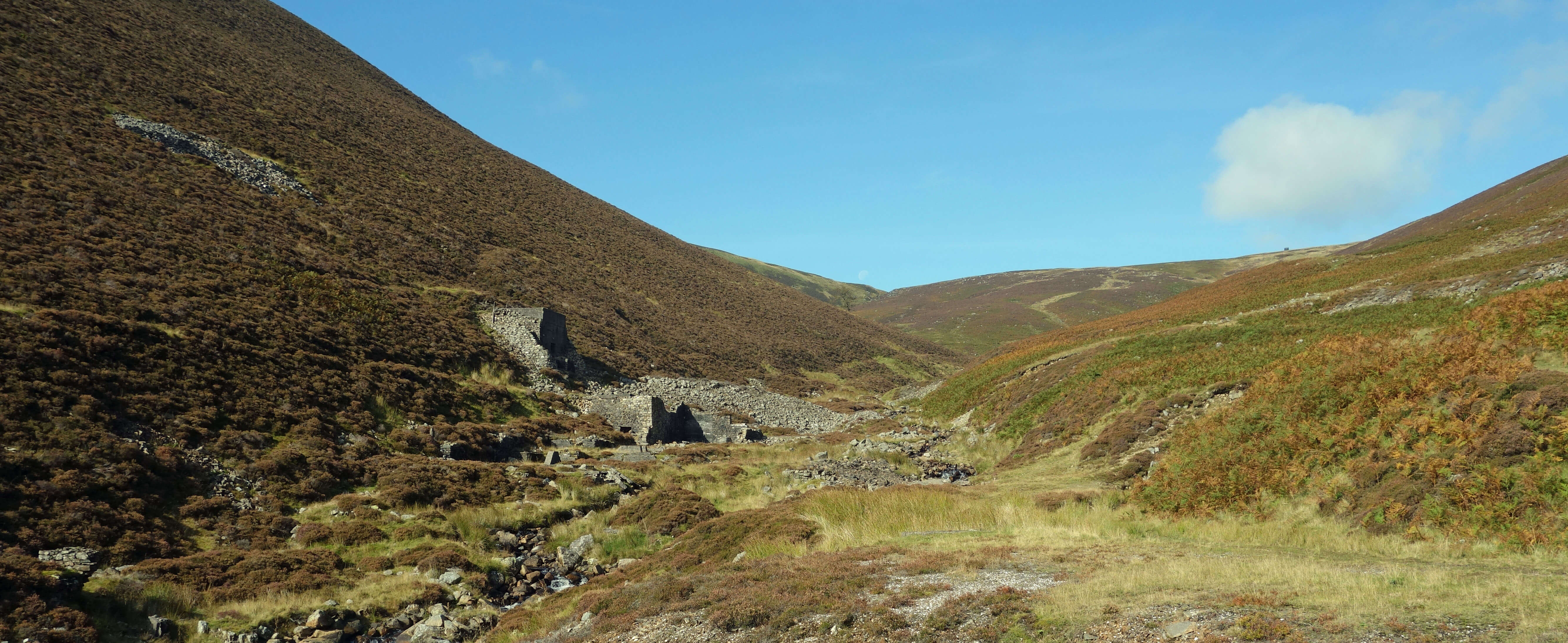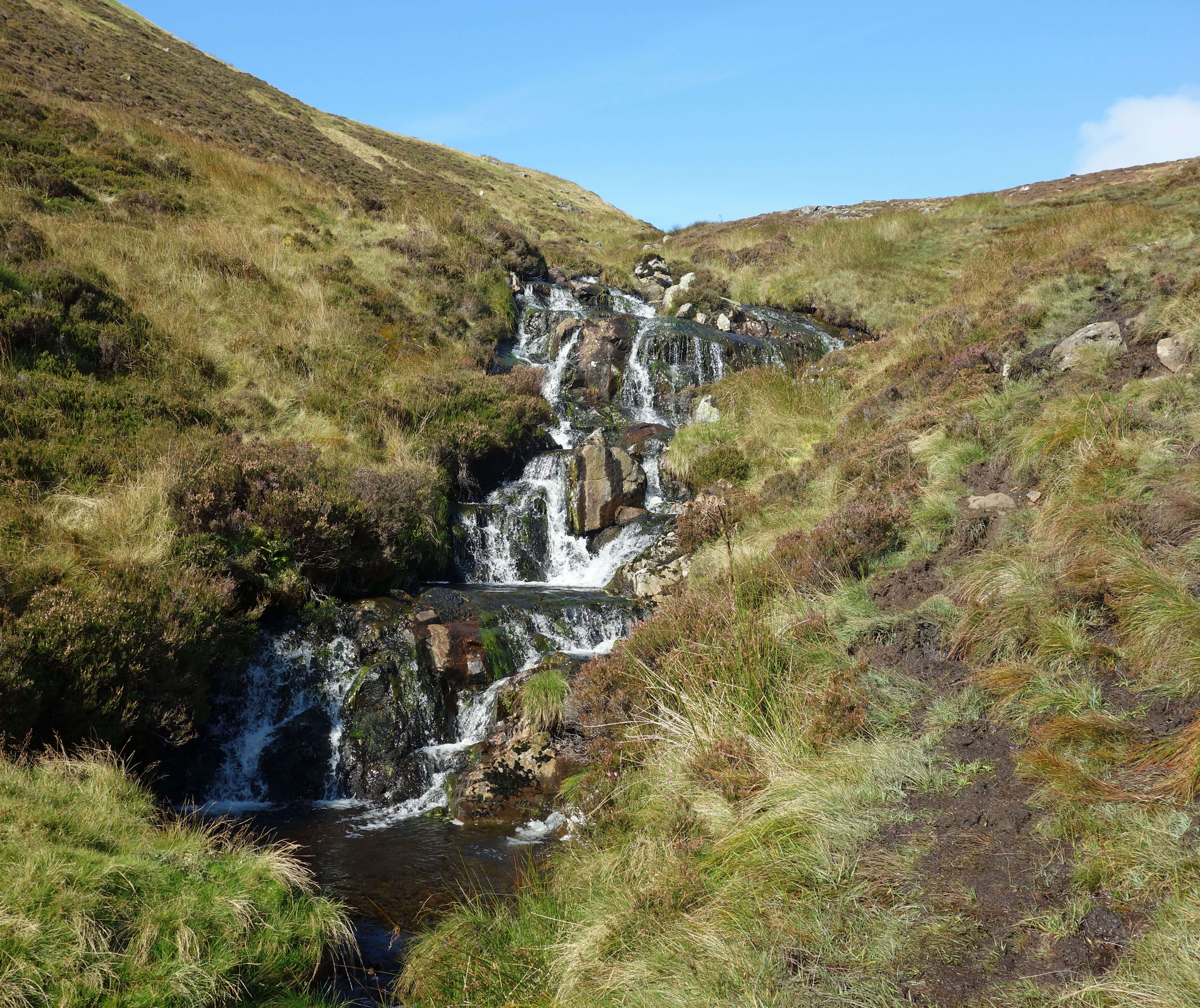
Home
Preamble
Index
Areas
Map
References
Me
Drakkar
Saunterings: Walking in North-West England
Saunterings is a set of reflections based upon walks around the counties of Cumbria, Lancashire and
North Yorkshire in North-West England
(as defined in the Preamble).
Here is a list of all Saunterings so far.
If you'd like to give a comment, correction or update (all are very welcome) or to
be notified by email when a new item is posted - please send an email to johnselfdrakkar@gmail.com.
61. Knott Alone
I have never joined a walking club. I notice that the local papers give details of the various clubs’ outings. It seems that happy wanderers (“my knapsack on my back, val-deri, val-dera”: what does that mean?) are partitioned into groups A+, A, B, C and so on, depending upon their experience, expertise and energy, to be led about the countryside on suitable walks. I don’t feel inclined to join them.
Misanthrope, I hear you say. How dare you! I don’t always walk alone but there are some good reasons to do so, I thought as I set off from Bowscale to walk to Knott in the open hills north of Skiddaw and Blencathra. I did not expect to see anyone else walking these hills, as anybody wanting to go for a walk can find more interesting and exciting terrain nearby. These Caldbeck Fells are for quiet solitude, a place to stroll with only one’s own thoughts for company. It is natural to walk alone here.

The valley of Mosedale
I walked into the verdant valley of Mosedale, beside the River Caldew and with the slopes of Carrock Fell and Bowscale Fell towering above. The wildlife introduced itself one-by-one. A woodpecker attacked a conifer; a wren flitted about the hedges; a grasshopper hopped onto the road; a dragonfly flew by; a red squirrel ran along the wall ahead of me. Sadly, I did not see much wildlife after that. A couple more wrens, a few rooks and crows, some pipits, and one grouse – that was about it for birdlife. I scanned the skies from time to time but they were empty. On the ground I saw even less, apart from sheep, of course. Mosedale seemed picturesque but sterile.
Is it really so? Has it always been the same?
What I had read on the map as a track turned out to be a surfaced road that continued as far as the Grainsgill Beck tributary. I could have saved myself four miles of walking – but it was pleasant walking, completely quiet apart from the sound of the Caldew. The impressive crags of Bowscale Fell enclosed Bowscale Tarn, too high for me to see. I could however see the moraine ridge implausibly holding the tarn in place. At the end of the road a magician drove up in his car and produced from it, with a flourish, a large dog, and then another … in total, seven dogs. They leapt about excitedly and about me.
I left the road, humanity and caninity to walk up by Grainsgill Beck. First, I came to the ruins of Carrock Mine, which was Cumbria’s only tungsten mine. It always puzzles me that a mineral can be found in only one place. What special conditions caused it to form? Or perhaps it does exist elsewhere but not where it was economical to mine. The tungsten was used to make filaments of electric lamps and during the two World Wars for armament production. The mine closed in 1981.
 Left: The old tungsten mine.
Left: The old tungsten mine.
I continued on what is marked as a bridleway, although it would be an intrepid horse and rider that tackled this path. It was an enjoyable scramble, a bit muddy in parts. I reflected that before the 18th century people did not walk for pleasure but for a purpose, alone or in a group, like Dick Whittington walking to London and the pilgrims to Canterbury. Then the Romantics found spiritual inspiration for their art through energetic walking. The ordinary person did not have much leisure time to walk for fun but some escaped occasionally from cities and factories to the fresh air of the hills. Walking clubs were formed to aid the mental and physical improvement of workers and also because there was safety in numbers when trespassing on the land of the wealthy.
 Right: The 'bridleway' by Grainsgill Beck.
Right: The 'bridleway' by Grainsgill Beck.
But walking alone you can walk at your own pace and not have to “trot alongside a champion walker,
nor mince in time with a girl” as Robert Louis Stevenson so bravely put it in his
Walking Tours
(Stevenson, 1876). The philosopher Frédéric Gros (referred to in
Sauntering 45) agrees that one should walk alone, for the main reason that the “body follows badly” if it is forced to adjust to the pace of others (Gros, 2014, p53).
Alone, you can adapt the walk to suit your own energy, changes in the weather, observations on the way, and so on, without lengthy negotiations and compromises with co-walkers. For example, on this walk I dallied overlong, for some, by Carrock Mine rummaging amongst the ruins, and then I walked relatively briskly up the slopes of Rigg and Knott when others might have dawdled taking many photographs. On the other hand, it is sometimes best to relax and let someone else make all the decisions, as with walking clubs.
When walking alone you are more likely to encounter wildlife than when accompanied by a group of chatterers. On the other hand, with many eyes and perhaps more expertise the group may be more likely to spot that wildlife. When alone, you aren’t going to be held up by someone else having an accident. On the other hand, it could be you having the accident and needing help. If I had fallen down a disused shaft near Carrock Mine then I would probably have had a long time alone to regret it. If, like me, you are intending to make notes along the way, you don’t want people pestering you to know what you’re scribbling. On the other hand, they may have helpful suggestions. Without them, after spending four or five hours tramping alone, shallow in your own thoughts, the hoped-for profundity might not emerge – as I am demonstrating.
I eventually reached the top of Knott (710 metres), which is the central and highest point of the Caldbeck Fells north of Skiddaw and Blencathra. The former had white clouds billowing over it and the latter, with the sun behind, was simply a dark outline. Knott wears its eminence lightly. Some nearby hills have ‘Great’ or ‘High’ in their name but not our humble Knott. It is only a few metres higher than some of them and it is just a smooth, grassy hump with nothing of interest. Revelling in my solitude, I settled to have a snack of some nuts when, oh no, I saw a man with seven dogs approaching. I waited for them to arrive. The dogs leapt about, attracted by my nuts. I gathered from the man that this was a regular walk for him and his dogs.

From Knott towards Blencathra (and man plus dogs)
I escaped by walking across Miller Moss to Great Lingy Hill. Here I felt more alone, not just from the man and his dogs but from all those who had previously created the path across Rigg to Knott. I could believe that nobody had ever walked over Miller Moss. There were no paths over this peat, grass and heather. Sitting on a rare large rock in the middle of this wilderness I paused to scan all the hills and horizons. Just as I had convinced myself that there was nobody to be seen anywhere I spied two tiny figures on a far distant ridge. My aloneness was shattered further as I made my way down by Arm o’ Grain when four walkers and a dog appeared on the track from High Pike. In all then I saw eight dogs and seven people, but only one who, through a lapse of sociability, I was able to chat to.

From Knott towards High Pike
I did not therefore fully achieve the anticipated solitude in the Caldbeck Fells. But in any case, according to Gros, despite the desirability of walking alone, “it’s impossible to be alone when walking, with so many things under our gaze … when walking you earn the sympathy of all the living things that surround us: trees and flowers” and that “you are not alone because when you walk you soon become two … there is always this dialogue between the body and the soul”.
There may be deep, original insights there as Gros, being a professional philosopher, is obliged to
provide them for us. However, popular culture is way ahead of him. For a start, it is not just people
that may be alone. For example, Ray Bradbury’s short story
There Will Come Soft Rains
has the sentence “The house stood alone in a city of rubble and ashes”. Also, it is not just individuals.
Tiffany warbled
I Think We’re Alone Now to No 1 in 1987.
So we can certainly be alone, thank goodness. As for the notion that aloneness is lost in
the company of objects such as trees and flowers – pah, the classic 1959
You're Never Alone with a Strand
advertisement knew that. Although, to be fair, the ad was notoriously unsuccessful because even in
1959 few people wanted to think themselves so alone that they needed the company of a cigarette.
And as far as walking alone is concerned, 50,000 Liverpudlians tell us every other week that it is impossible:
You'll Never Walk Alone.
Date: September 19th 2019
Start: NY359316, south of Bowscale (Maps: OL5, OL4)
Route: N – Mosedale – W – Swineside – W by River Caldew and Grainsgill Beck – Miller Moss
– SW – Rigg – W – Knott – NE –
Great Lingy Hill – SE – Grainsgill Beck – E – Mosedale, Bowscale
Distance: 9 miles; Ascent: 485 metres
Home
Preamble
Index
Areas
Map
References
Me
Drakkar
© John Self, Drakkar Press, 2018-

Top photo: The western Howgills from Dillicar;
Bottom photo: Blencathra from Great Mell Fell



 Left: The old tungsten mine.
Left: The old tungsten mine.
 Right: The 'bridleway' by Grainsgill Beck.
Right: The 'bridleway' by Grainsgill Beck.


